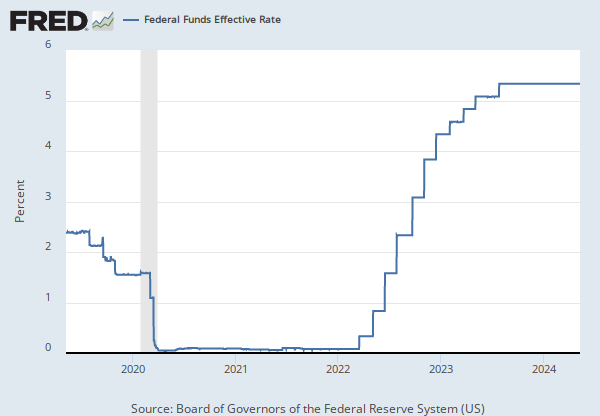Federal Reserve Economic Data: Your trusted data source since 1991
Data in this graph are copyrighted. Please review the copyright information in the series notes before sharing.
NOTES
Source: Federal Financial Institutions Examination Council (US)
Source: Federal Reserve Bank of St. Louis
Release: Reports of Condition and Income for All Insured U.S. Commercial Banks
Units: Percent, Not Seasonally Adjusted
Frequency: Quarterly, End of Period
Notes:
This series is discontinued and will no longer be updated. For alternative data in FRED similar to the discontinued series, see the FDIC Quarterly Banking Profile. Additional consolidated data is available on the FDIC's Bank Data and Statistics.
The Federal Reserve Bank of St. Louis calculates this annualized series as the ratio of Tax-Adjusted Income to Average Earning Assets using raw data as collected by the FFIEC. The source provides this data at https://cdr.ffiec.gov/public/.
Tax-adjusted income is the sum of Net Interest Income (call item RIAD4074) and annualized Income/Loss before Income Taxes and Extraordinary Items and Other Adjustments (call item RIAD4301), which is multiplied by the corresponding tax rate based on the annual income level. Currently, Average Earning Assets is computed as the sum of Interest-Bearing Balances (call item RCFD0071); Total Loans and Leases, Net of Unearned Income (call item RCFD2122); Total Trading Assets (call item RCFD3545); Total Held-to-Maturity Securities (call item RCFD1754); Total Amortized Cost of Available-For-Sale Securities (call item RCFD1772); Federal Funds Sold (call item RCONB987); Securities Purchased Under Agreement to Resell (call item RCFDB989).
The Federal Reserve Bank of St. Louis includes the sum of Federal Funds Sold (call item RCONB987) and Securities Purchased Under Agreement to Resell (call item RCFDB989) in lieu of call item RCFD1350 (Federal Funds Sold and Securities Purchased Under Agreements to Resell in Domestic Offices of the Bank and of Its Edge and Agreement Subsidiaries, and in International Banking Facilities(IBFs)) beginning in the first quarter of 2002.
Before 1993 the Average Earning Assets was the sum of Interest-Bearing Balances (call item RCFD0071); Federal Funds Sold and Securities Purchased Under Agreements to Resell in Domestic Offices of the Bank and of Its Edge and Agreement Subsidiaries, and in International Banking Facilities(IBFs) (call item RCFD1350); Total Investment Securities at Book Value (call item RCFD0390); Total Loans and Leases, Net of Unearned Income (call item RCFD2122); Total Assets Held in Trading Accounts (call item RCFD2146).
Users are advised to use the Federal Reserve Board of Governors' data dictionary to retrieve detailed information for specific call items.
Suggested Citation:
Federal Financial Institutions Examination Council (US) and Federal Reserve Bank of St. Louis, Net Interest Margin for all U.S. Banks (DISCONTINUED) [USNIM], retrieved from FRED, Federal Reserve Bank of St. Louis; https://fred.stlouisfed.org/series/USNIM, May 17, 2024.
Source: Board of Governors of the Federal Reserve System (US)
Release: H.15 Selected Interest Rates
Units: Percent, Not Seasonally Adjusted
Frequency: Monthly
Notes:
Averages of daily figures.
For additional historical federal funds rate data, please see Daily Federal Funds Rate from 1928-1954.
The federal funds rate is the interest rate at which depository institutions trade federal funds (balances held at Federal Reserve Banks) with each other overnight. When a depository institution has surplus balances in its reserve account, it lends to other banks in need of larger balances. In simpler terms, a bank with excess cash, which is often referred to as liquidity, will lend to another bank that needs to quickly raise liquidity. (1) The rate that the borrowing institution pays to the lending institution is determined between the two banks; the weighted average rate for all of these types of negotiations is called the effective federal funds rate.(2) The effective federal funds rate is essentially determined by the market but is influenced by the Federal Reserve through open market operations to reach the federal funds rate target.(2)
The Federal Open Market Committee (FOMC) meets eight times a year to determine the federal funds target rate. As previously stated, this rate influences the effective federal funds rate through open market operations or by buying and selling of government bonds (government debt).(2) More specifically, the Federal Reserve decreases liquidity by selling government bonds, thereby raising the federal funds rate because banks have less liquidity to trade with other banks. Similarly, the Federal Reserve can increase liquidity by buying government bonds, decreasing the federal funds rate because banks have excess liquidity for trade. Whether the Federal Reserve wants to buy or sell bonds depends on the state of the economy. If the FOMC believes the economy is growing too fast and inflation pressures are inconsistent with the dual mandate of the Federal Reserve, the Committee may set a higher federal funds rate target to temper economic activity. In the opposing scenario, the FOMC may set a lower federal funds rate target to spur greater economic activity. Therefore, the FOMC must observe the current state of the economy to determine the best course of monetary policy that will maximize economic growth while adhering to the dual mandate set forth by Congress. In making its monetary policy decisions, the FOMC considers a wealth of economic data, such as: trends in prices and wages, employment, consumer spending and income, business investments, and foreign exchange markets.
The federal funds rate is the central interest rate in the U.S. financial market. It influences other interest rates such as the prime rate, which is the rate banks charge their customers with higher credit ratings. Additionally, the federal funds rate indirectly influences longer- term interest rates such as mortgages, loans, and savings, all of which are very important to consumer wealth and confidence.(2)
References
(1) Federal Reserve Bank of New York. "Federal funds." Fedpoints, August 2007.
(2) Board of Governors of the Federal Reserve System. "Monetary Policy".
Suggested Citation:
Board of Governors of the Federal Reserve System (US), Federal Funds Effective Rate [FEDFUNDS], retrieved from FRED, Federal Reserve Bank of St. Louis; https://fred.stlouisfed.org/series/FEDFUNDS, May 17, 2024.






























